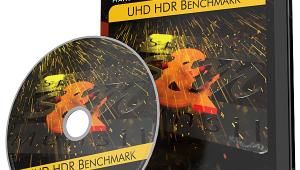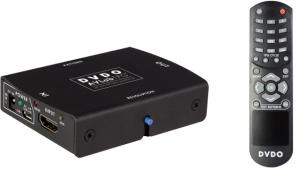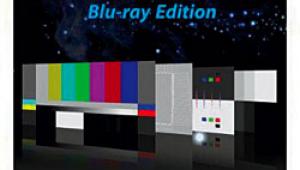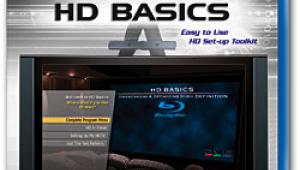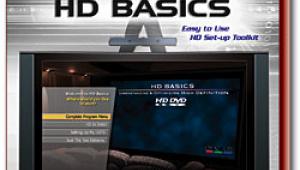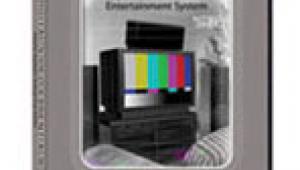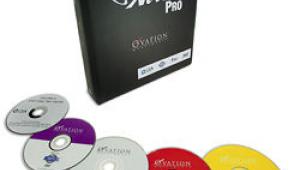IE-33 Audio Analyzer
Evaluating and optimizing a home theater audio system can be a daunting task. To do it properly, you need several pieces of expensive and bulky equipment, including a real-time analyzer (RTA), a sound-pressure level (SPL) meter, a signal generator, and one or more high-quality microphones with low-noise preamps. No wonder it helps to have a professional installer.
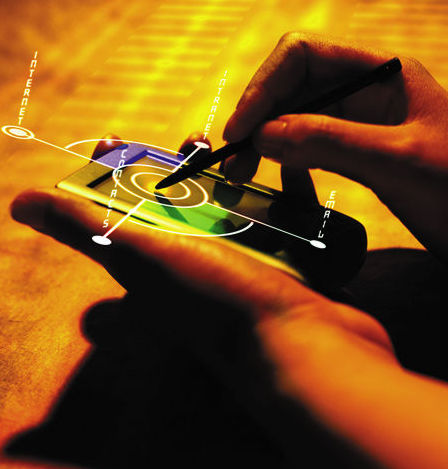
But even professional installers get tired of hauling around all that test gear. Fortunately, there is an attractive alternative: the IE-33 from Ivie Technologies, which turns an ordinary personal digital assistant (PDA) into a powerful audio analyzer (see Fig.1).
What You See Is What You Gets
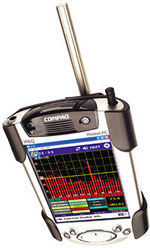 The IE-33 system consists of several parts. Of course, you need a PDA with sufficient power; a 400MHz processor is the minimum requirement. Also, it must conform to certain physical characteristics so it can fit in the IE-33's special plastic jacket, which houses the audio inputs: two line-level RCA inputs and a four-pin balanced and powered microphone input. The jacket also houses a low-noise preamp, a 20-bit A/D converter, and battery-management firmware.
The IE-33 system consists of several parts. Of course, you need a PDA with sufficient power; a 400MHz processor is the minimum requirement. Also, it must conform to certain physical characteristics so it can fit in the IE-33's special plastic jacket, which houses the audio inputs: two line-level RCA inputs and a four-pin balanced and powered microphone input. The jacket also houses a low-noise preamp, a 20-bit A/D converter, and battery-management firmware.
Other elements of the Ivie system include a Type II omnidirectional condenser microphone, which is about 4 inches long and connects to the mike input on the jacket. A Type I mike, which exhibits greater precision (tighter tolerance) than a Type II, is available as an option for $1050. Still, the Ivie Type II mike is far more precise than most commonly available microphones, and it conforms to tighter tolerances than the ANSI spec for such mikes. Rounding out the hardware is a soft-sided carrying case that accommodates the PDA and microphone.
 On the software side, the system comes with a CD-ROM with software for the PDA and a Windows PC, which is used to back up the data collected by the IE-33. Fortunately, you don't need a powerful PC to run the software; I had no trouble with it on my 500MHz laptop running Windows 98SE.
On the software side, the system comes with a CD-ROM with software for the PDA and a Windows PC, which is used to back up the data collected by the IE-33. Fortunately, you don't need a powerful PC to run the software; I had no trouble with it on my 500MHz laptop running Windows 98SE.
Among the compatible PDAs is the Compaq iPAQ 3900 series or above. The IE-33 system is available with or without the PDA; if you already have a compatible model, the jacket, mike, case, and software are available for $999. You can also buy a complete package, including a PDA and IE-33 system, from Ivie. The review package I got included an iPAQ 3950; by the time you read this, the base package will include an iPAQ 5555, which adds Bluetooth and WiFi capabilities but has the same processor speed as the 3950. The complete system price will be $1647. Of course, that price increases with more powerful and feature-laden PDAs, but they don't perform their IE-33 duties any better than the base model.
Set Up the Band
If you buy the complete package with PDA from Ivie, the software is preloaded and the hardware is preconfigured. However, if you already have a compatible PDA, you'll need to load the software and calibrate the system yourself. This is no big deal; loading software from a computer into a PDA is straightforward, and calibration consists of entering an offset number, which is included in the documentation, that corresponds to the individual microphone you have.
All PDAs come with a cradle that is used to charge the PDA's battery and connect it to a host PC. The cradle I got included serial and USB connectors; my laptop has both types of interfaces, but for some reason, only the serial connection worked. The iPAQ fit in the cradle with the jacket on, but would not seat easily onto the cradle's electrical connector.
Charging the battery took about 3.5 hours; fully charged, it provided about 1.5 hours of use. An optional battery extender ($99) attaches to the back of the jacket. With 1840 milliamp-hours (mAh) of juice, the extender more than doubles the life of the iPAQ's internal battery.
Interestingly, many PDAs, including the iPAQ, slowly drain the battery even when the power is off—if you don't leave the PDA in its cradle, the software and data will be lost after a while. (During the review period, I unplugged it for five days, after which the IE-33 software and calibration were still intact.) To prevent losing the configuration settings, the IE-33 software stores the config file in a small section of nonvolatile memory, making it available if the software must be reinstalled.
During my execution of the initial setup procedure, the iPAQ didn't recognize the Ivie jacket, and it exhibited other problems, but these were due to the fact that I had an older version of the software; when I updated it to v.5.6.1, everything worked fine.
RTA Speedwagon
As with any PDA, you operate the IE-33 by tapping various "soft" buttons on the screen with the stylus. The four hardware buttons and 4-way cursor pad below the screen duplicate the action of certain soft buttons.
At the bottom of the screen are four pull-up menus. The File menu lets you set your preferences, select the input, and exit the program, while the Function menu lets you select the function you wish the IE-33 to perform. As you might expect, the Display menu provides options that affect the display of information, and the Info menu reveals the software version.
The IE-33 screen changes with the selected function, but in its default mode, the top half of the screen is an RTA display, showing the amplitude of different frequency bands in (almost) real time. (There is a slight processing lag, but this is to be expected in any RTA.) You can activate a peak-hold function that displays the highest level reached in each band during the measurement.
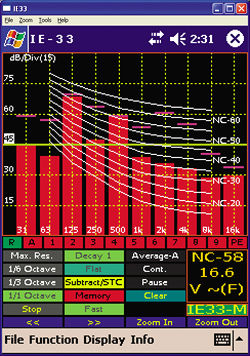 Another useful display option is called NC (for Noise Class), which is used to quantify ambient noise levels. (There's also an NR [Noise Rating] option, which is a similar quantification used mostly in Europe.) When you select NC in the Display menu, the RTA display switches to 1-octave resolution and is overlaid with curves representing different NC ratings (see Fig.2). The NC rating is determined by the band with the highest level and the NC curve it comes closest to. In my theater at midnight with the equipment powered on but not playing, the NC rating wavered between 29 and 30; a professional recording studio has a rating around 25.
Another useful display option is called NC (for Noise Class), which is used to quantify ambient noise levels. (There's also an NR [Noise Rating] option, which is a similar quantification used mostly in Europe.) When you select NC in the Display menu, the RTA display switches to 1-octave resolution and is overlaid with curves representing different NC ratings (see Fig.2). The NC rating is determined by the band with the highest level and the NC curve it comes closest to. In my theater at midnight with the equipment powered on but not playing, the NC rating wavered between 29 and 30; a professional recording studio has a rating around 25.
